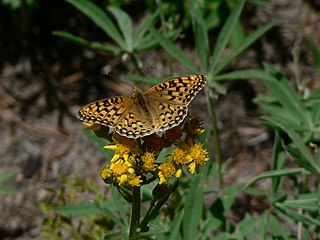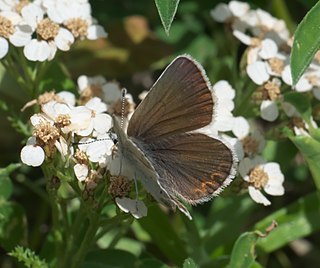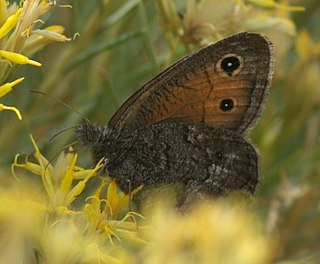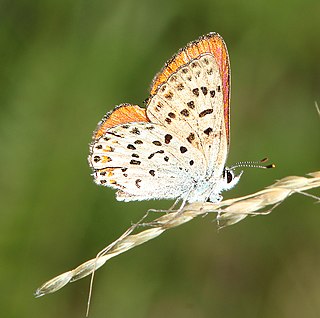
Speyeria zerene, the zerene fritillary, is a butterfly found in the western portions of the United States and Canada. The species was first described by William John Swainson in 1827.

Icaricia shasta, the Shasta blue, is a butterfly of the family Lycaenidae. It is found from the northwestern United States to southern Saskatchewan and Alberta.

Euphilotes enoptes, the dotted blue, is a species of blue (Polyommatinae) butterfly in the family Lycaenidae. It is found in North America.
Euphilotes centralis, the central blue, is a butterfly in the family Lycaenidae. It was first described by William Barnes and James Halliday McDunnough in 1917. It is found in North America.
Ochlodes yuma, the Yuma skipper, is a species of grass skipper in the butterfly family Hesperiidae.
Poladryas arachne, the arachne checkerspot, is a species of crescents, checkerspots, anglewings, etc. in the butterfly family Nymphalidae.
Nemeris speciosa is a species of geometrid moth in the family Geometridae. It is found in North America.
Hesperia lindseyi, known generally as Lindsey's skipper, is a species of grass skipper in the butterfly family Hesperiidae. Other common names include the Lindsey's branded skipper and lost-egg skipper. It is found in North America.

Speyeria nokomis, the nokomis fritillary, is a species of fritillary in the family of butterflies known as Nymphalidae. It is found in North America.

Lycaena editha, known generally as the Edith's copper or great gray copper, is a species of copper in the butterfly family Lycaenidae. It is found in North America.

Plebejus anna, or Anna's blue, is a species of blue in the butterfly family Lycaenidae. It is found in North America.
Euphilotes bernardino, the Bernardino blue, is a butterfly in the family Lycaenidae. The species was first described by William Barnes and James Halliday McDunnough in 1916. It is found in North America.
Euphilotes mojave, known generally as the Mojave dotted blue or Mojave blue, is a species of blue in the butterfly family Lycaenidae. It is found in North America.

Satyrium semiluna, known generally as the sagebrush sooty hairstreak or half-moon hairstreak, is a species of hairstreak in the butterfly family Lycaenidae. It is found in North America. The MONA or Hodges number for Satyrium semiluna is 4277.1.
Panorpa speciosa is a species of common scorpionfly in the family Panorpidae. It is found in North America.
Satyrium auretorum, or gold-hunter's hairstreak, is a species of hairstreak in the butterfly family Lycaenidae. It is found in North America.

Cercyonis meadii, or Mead's wood nymph, is a species of brush-footed butterfly in the family Nymphalidae. It was first described by William Henry Edwards in 1872 and it is found in North America.

Apodemia virgulti, or Behr's metalmark, is a species of metalmark in the butterfly family Riodinidae.
Lycaena xanthoides, the great copper, is a species of copper in the butterfly family Lycaenidae. It is found in North America.

Lycaena gorgon, known generally as the gorgon copper or stream water-crowfoot, is a species of copper in the butterfly family Lycaenidae. It is found in North America.









